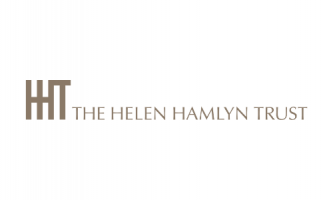
Research: Early Years Learning at the Science Museum
Reviewing the literature on zero to eight-year-old children's engagement with objects in science museums.
About the research project
Research Summary
- July 2019 - December 2019
This project involved a Rapid Evidence Assessment (REA) of research literature, and a review of relevant practical publications, concerning zero to eight-year-old children’s engagement with objects in science museums.
It was undertaken as the first part of a collaborative research project between the Science Museum Group, Helen Hamlyn Centre for Pedagogy (0-11 Years) at UCL Institute of Education and The Helen Hamlyn Trust.
The REA was designed to inform empirical research and the development of new museum experiences and pedagogic approaches to engage young children with Science, Technology, Engineering and Mathematics (STEM) museum objects.
In England, over 600,000 children per annum visit museums in the Science Museum Group. They are accompanied by their families or visit in their nursery and school groups.
When attending STEM museums, most young visitors spend their time in interactive spaces, where they can touch, feel and experiment with exhibits and learn about scientific concepts through hands-on experiences.
These spaces tend to be located at a distance from museums’ culturally significant collections of material and virtual objects, which tell the story of humankind’s inventiveness in STEM over the ages.
The REA team was led by Professor Rosie Flewitt, who has an international reputation for early childhood education research.
about the collaboration
The aim of this collaborative research project was to generate evidence on what works for young children’s engagement with STEM museum objects.
The Science Museum Group and Helen Hamlyn Centre for Pedagogy have developed and prototyped innovative practical ideas with children and families based on findings from the REA and the Science Museum Group’s review of practical publications.
This model of academic research being put into practice is what makes the project so unique and its findings useful not only for the Science Museum Group but for the wider museum and early years sectors.
The final project is due in March 2022 when the empirical research will have been completed.
Quote
This important review of research will help academics, educators, parents and museum professionals to plan young children’s museum encounters in ways that spark their curiosity in science museums’ rich object collections.
Research outputs
rea Research methods
The REA involved a systematic review of peer-reviewed literature published from 2000 to 2019.
An REA identifies and analyses relevant research studies that have already been published on a particular subject in order to benefit from the findings from multiple research studies in a chosen topic area.
Working closely with practitioner colleagues at the Science Museum, London, the project team was assisted by specialised database technology at University College London’s Institute of Education.
The systematic database searches of paper titles and abstracts identified 2,936 papers that were potentially relevant. This resulted in a final sample of 48 papers for in-depth scrutiny to inform our review.
Research findings
The REA found that children’s interest in museum objects is heightened when they experience museum artefacts and spaces physically, emotionally, sensorially and cognitively.
This happens when they have free choice about which objects they engage with, and when they have opportunities to talk about STEM museum objects with their peers, siblings and adults.
It also found that there needs to be a more expansive understanding of young children’s museum experiences as intertwined with people, material objects and spaces.
Finally, the REA found that there is very little research that focuses explicitly on young children’s engagement with objects in STEM museums.
Further research is needed to inform the field, including interdisciplinary and creative studies, as well as participatory and action research with children, museum educators, teachers and parents.
Subsequent phases of this collaborative research project focus on prototyping innovative ideas for young children’s object engagement in STEM museum collections.
This will contribute to closing the gap of knowledge in this field with research findings that are applicable not only in the Science Museum Group but across the sector.
Research team
Research team
principal researcher
Researchers
-
Dr Yana Manyukhina (University College London)
-
Dr Mukdarut Bangpan (University College London)
-
Professor Dominic Wyse (University College London)
-
Karen Davies (Head of Learning Research and Resources, Science Museum Group)
-
Maria Serveta (Senior Audience Researcher, Science Museum Group)
Project partners
Project partners

Science Museum Group
With funding from

The Helen Hamlyn Trust
Contact us
For general enquiries about the Education and Social Research Institute’s children and childhood group, you can contact research group lead Prof Rachel Holmes.
PROJECT ENQUIRIES
- For enquiries about the REA, please contact Professor Rosie Flewitt.
- For up-to-date information on the empirical research, please contact the Science Museum Group team.
